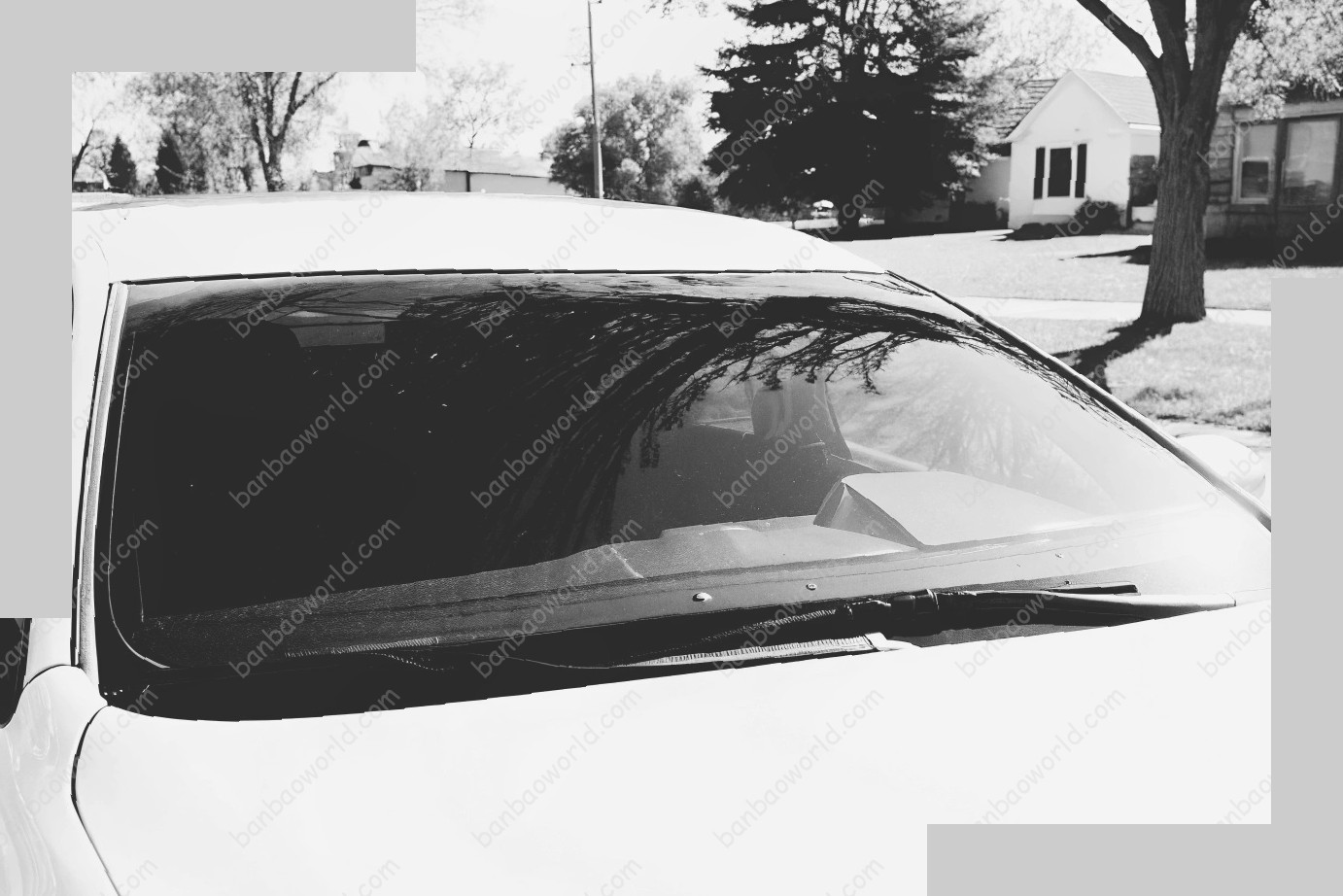Minnesota Tint Laws Explained
Minnesota vehicle window tint laws are relatively straightforward, although somewhat unique. They are as follows:
• All windows, except the windshield, can have no more than 50 percent Visible Light Transmission (VLT). In other words, the film has to be more than 50 percent see-through. Other states (North Dakota and Nebraska, for example) don’t allow window tint at all (save for a specific exemption for medical use).
• The rear window has no restrictions regarding tint. California and Alaska, for example, don’t allow window tint on any windows save the rear.
• Only the top 6 inches of the windshield can have tint. Other states (Hawaii, North Dakota and others) can have no tint at all on the windshield. Still others (Massachusetts, for example) only allow a wide strip of "medical tint" with no other approvals .
• The windows immediately left and right of the driver can have no tint at all.
• The windows in front of and behind the driver’s seat can have only two windows with tint, and only on one side of the vehicle. Ten other states (including Wisconsin, Illinois, Michigan and Iowa) only allow tint on one side of the vehicle. Seven states (including Pennsylvania, West Virginia and Tennessee) allow only one window in the rear.
• Both reflective and non-reflective tint are legal. Nineteen states (including the Dakotas and Idaho) only allow non-reflective tint.
• In contrast to most states, Minnesota also requires a certification sticker to be placed on the windows. Other states — Maine, Montana and Texas among them — allow no stickers at all.

Legal Tint Percentage for Various Vehicle Types
Unlike other states, Minnesota tint laws are different in that they are simply measured by the percentage of legal tint you have on your windows – not the percentage of light that they allow in. Confused? We don’t blame you – it’s pretty straightforward – we promise.
Sedans and SUVs or Vans
Front windshield: A non-reflective tint is permitted above the manufacturer’s AS-1 line, or the top 5 inches.
Front passenger window: Must permit over 50% of the light in.
Front driver window: Must permit over 50% of the light in.
Back passenger windows: Must permit over 50% of the light in.
Back driver windows: Must permit over 50% of the light in.
Rear window: Must permit over 50% of the light in.
Trucks
Front windshield: A non-reflective tint is permitted above the manufacturer’s AS-1 line, or the top 5 inches.
Front passenger window: Must permit over 50% of the light in.
Front driver window: Must permit over 50% of the light in.
Back passenger windows: Must permit over 50% of the light in.
Back driver windows: Must permit over 50% of the light in.
Rear window: Must permit over 50% of the light in.
Can the windows on your vehicle be tinted darker than the legal percentage? Yes. Minnesota law only prohibits window tint from being this dark on passenger vehicles. However, if you have a truck or van registered as a commercial or farm truck you can have tint levels darker than the state minimum.
Exceptions to the Tint Law in Minnesota
Minnesota drivers who need tint on certain windows to manage a medical condition may be eligible for an exemption from the state’s window tint regulations, including its maximum tint levels. However, certain conditions do apply: for example, the minimum level of visible light transmission must be at least 35 percent for all other windows. This means that while you may be permitted to tint your windshield, it must allow more than half of ambient light in.
In addition, you may be required to obtain a permit from the state for such tinting — and this typically comes with a fee. Both the physician providing the note and the tinting company must complete separate portions of the permit application. Renewals will generally be required at least annually.
In rare cases, operators of taxicabs and limousines may be granted exemptions from the standard tint levels as well, although there is no mention of this in the state statutes.
If you are unsure about whether or not you can get an exemption, you should be able to get in contact with someone in your local law enforcement agency for further guidance.
Penalties for Non-Conformance with Minnesota Tint Laws
The determination of whether a particular tinted window complies with Minnesota law is subject to personal judgment and discretion. For this reason Minnesota has chosen not to require the police to make determinations of window tint compliance, from the patrol car during the stop or inspection. If the window tint is believed to be in violation out on the road, officers will issue a citation but will not conduct further tests at that time. The fines for violating window tint laws are $50 per window in the case of sedans , SUVs, pickup trucks and vans. For buses, passenger vans and buses, the fine is $150 per window.
In addition, drivers who violate window tint laws on gather points as more than two separate violations are subject to impound and the vehicle must remain in a secure impound lot for 30 days. Those who have more than two violations and have their vehicles impounded also face the loss of their driver’s license until the impound period has ended.
How to Tell if Your Tints are Legal
After determining that they have illegal window films on their car, the next question a car owner will have is how do I measure my film to be able to get within the legal window shade percentage. Fortunately, there is a simple tool sold for about $20 at any automotive store called a TWM. It stands for "Tint Windows Meter" and it will measure the light that penetrates your window film. This can be a simple way for testing your window film.
Here’s how you measure your window:
These guidelines will help determine if other windows not so easily accessible are compliant or not:
Front window drivers side: Always the drivers side window. (Window closest to driver and the windshield.
Back window drivers side: Third row from the back. Easy to measure from the trunk side
Back window passenger side: Third row from the back. Easy to measure from the trunk side
Front window passenger side: Easy to measure from the driver’s side
If you have a coupe and don’t know where the passenger side window is, measure from the back window back one window. If you have a sedan, which you obviously know because you are driving a four door car, measure each window in the rear window from the back of each window to the front. If you have an SUV, please measure each window.
Advantages of Having Legal Window Tint
The benefits of adhering to the laws around legal window tinting in Minnesota are numerous. To start, legal window tinting can provide added privacy and security for your vehicle or home. It can also help reduce heat and glare, making your car or driveway a more comfortable place to be. This is especially beneficial during the hot and sunny summer months when you want to avoid the sun’s harsh rays and keep the interior of your vehicle or home cooler.
Safety is another reason to keep your windows tinted within the state’s legal limit. Depending on the severity of the tint, darker windows can be more difficult to see through, which can impair the driver’s view or the first-responder’s ability to look inside. When you have legal tint, you know can see clearly through the glass, ensuring visibility and safety.
In addition, adhering to Minnesota’s window tint laws saves you money. If you do get pulled over and found to be in violation of these rules , it could cost you a fine or more. You might also be on the hook to have your tinted windows removed and replaced with legal tint, which can cost you time and money in the end. Even though you might pay a little more now to have your windows tinted, in the long run you will save money by avoiding a potential fine.
It’s important to also consider how installing legal tint affects the value of your vehicle or home. If your windows are tinted outside of the law and an interested buyer or lessee discovers this, they might question what else these windows are hiding. They might presume they are damaged or chipped, or simply don’t believe any property owner would purposely break the law.
Ultimately, the legal window tinting in Minnesota saves you time, money and hassle. You and your car will be safer, but you’ll also enjoy increased comfort and better property value.

